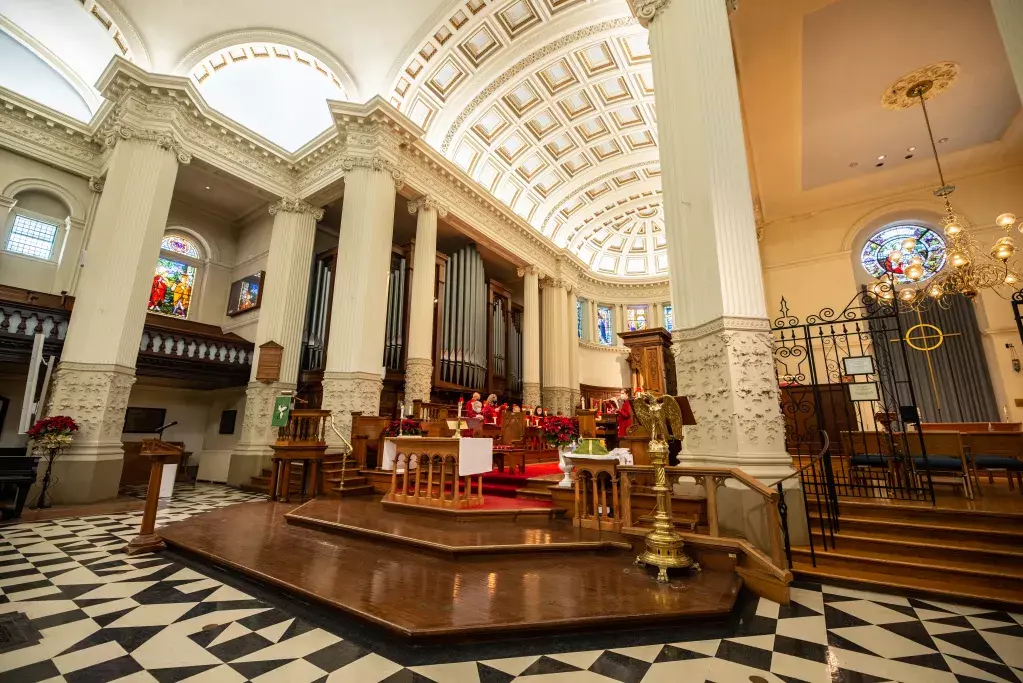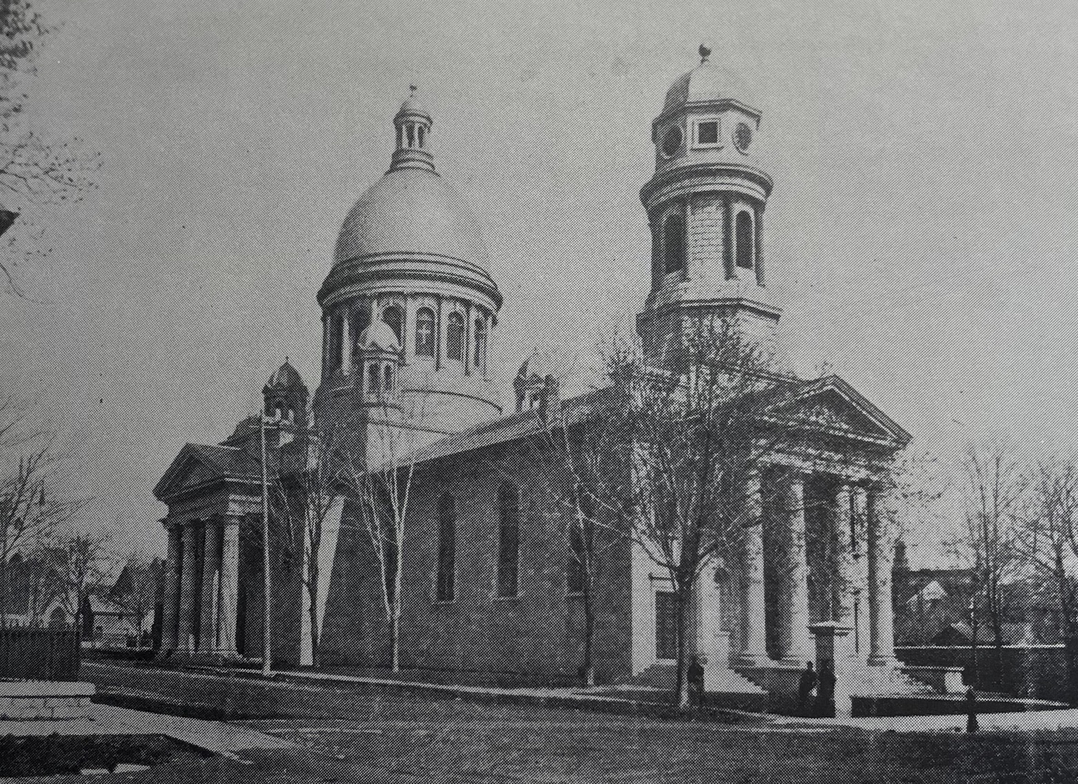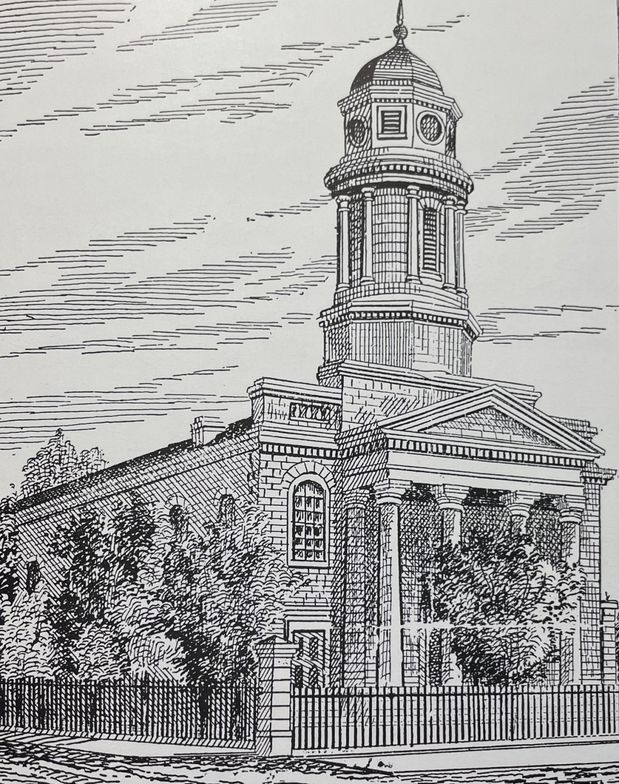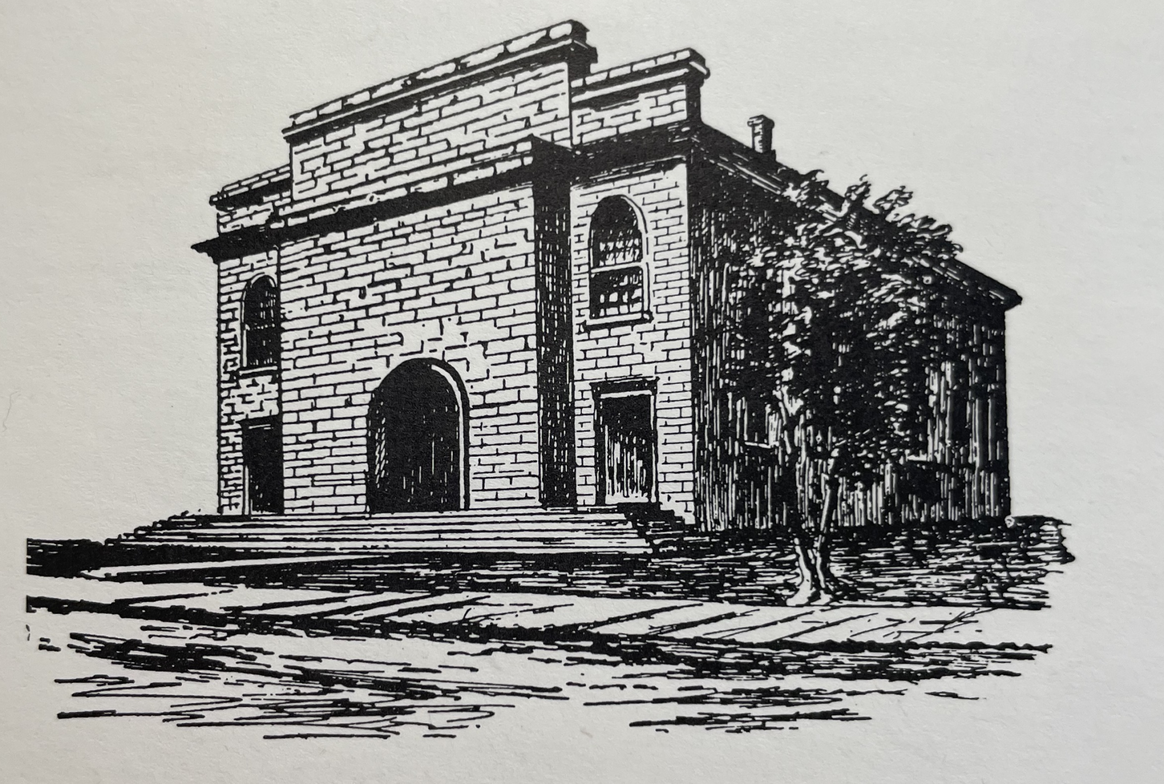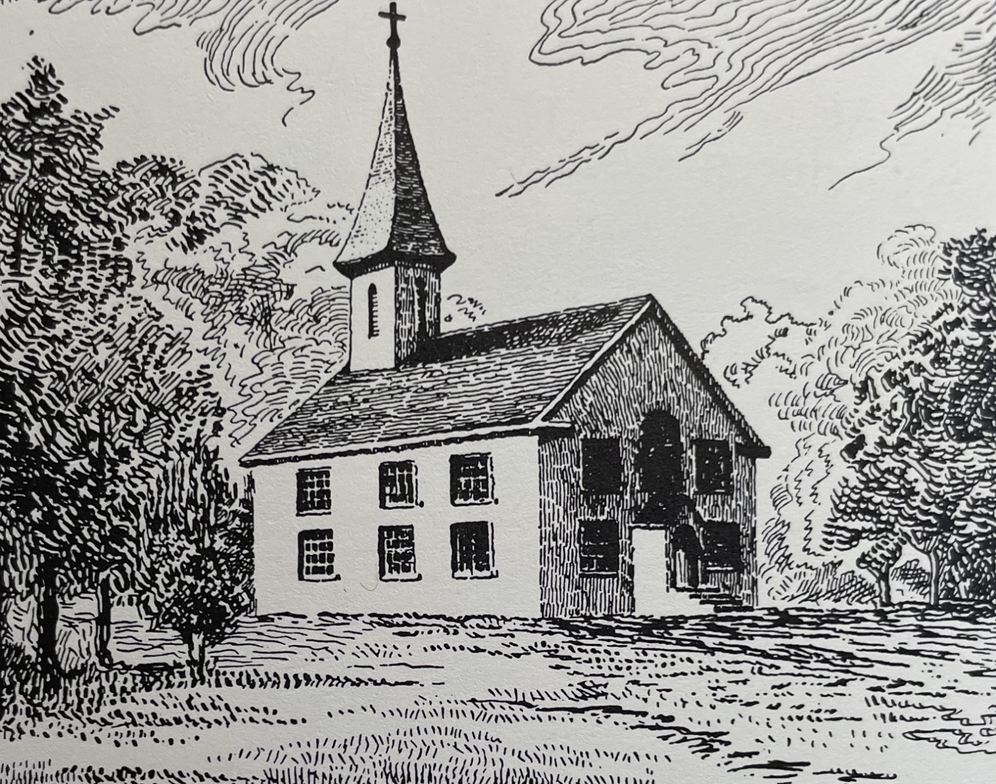About the Cathedral
Welcome to Saint George's Cathedral, the Cathedral - or principal church - of the Anglican Diocese of Ontario. We are part of the Anglican Church of Canada and the World Wide Anglican Communion. Whoever you are, wherever you come from, whomever you love, and regardless of what you may bring or are searching for, you are welcome here.
On this page, you will learn a bit about this Cathedral's rich history, and the ways in which we continue to live out our mission. There are many ways to get involved in the life of this community, and we hope you will connect with us!
1725-present
In February of 1792, the construction of Kingston’s first church (of any denomination) began. The history of St George's Cathedral spans centuries, from humble roots as a building “that resembled a barn more than a church” to the first cathedral in Kingston. St. George’s has been a defining monument in Kingston’s skyline for over 200 years, and its beginnings helped to shape the city today.
It might surprise many to learn that St. George’s Cathedral wasn’t always at the corner of Johnson and King Streets. At the time, the land that the original church was built upon was known as “block G”. This area encompassed most of the area bounded by King, Brock, Wellington, and Clarence Streets. Early descriptions of the church described it as, “a frame building. The church had an entrance at the side and gable, and small galleries at both ends. It had a belfry and small bell, which rang at stated hours every day…”.
The first service was held by Reverend John Stuart and was conducted before the church was completed. Prior to the construction of the church, Stuart conducted his worship services for both civilians and soldiers within one of the rooms in the garrison. Because St. George’s was the only church in the area at the time, there were many Loyalists in regular attendance. One of the most notable was the important Mohawk leader, Koñwatsi’tsiaiéñni, also known as Molly Brant. Brant was the only woman among the 54 original founding members of St. George’s parish. Then in 1794, only two years after the church was erected, the wooden church was deemed too small and needed to be expanded, so a gallery was added to provide extra space. By 1802 the influx of new immigrants required a 20-foot addition to the building.
Despite the large number of worshipers in the area, the church remained the only place of worship in the area for several years. The church provided services until 1825 when it was replaced by the stone edifice of St. George’s church built on the corner of Johnson and King St.
The building that presently sits on the corner of Johnson and King St was built between 1825-1828. The original layout was a two-story limestone building designed in the Georgian style. The architect, Thomas Rogers designed St. James Anglican Church in Toronto, various residences in Kingston but most notably in Kingston was the original stone building of St. George’s.
For the original build, Rogers planned a classic rectangular building (also known as a basilica) with a central nave. It was five bays in length, with a shallow apse at the end of the aisle. Rogers envisioned a grand entrance covered by a portico in an Ionic order style. However, these additions were not added until later. A tower with a clock and belfry was also built; but unfortunately, the tower was torn down a decade later due to structural problems.
The church underwent its’ first of several substantial changes during the 1840s. The additions made in this period are credited to George Browne, who gave the building its’ Neoclassical features. The original rectangle portion of the church was enlarged, and the Georgian-style clock tower was added. The round stonework tower featured eight Corinthian columns and four arched and louvred openings that rest on an octagonal base. Other additions to the structure included the grand entrance that Rogers envisioned. A portico with four Tuscan-style columns facing King St. More Tuscan designs can be found in the aisle bays of the front entrance and the moulding around the doors and windows. All these features can still be viewed today and is a great example of Georgian and Neoclassical architecture.
The next significant changes came in 1891 when the cathedral was once again enlarged. Architect Joseph Power (known for the design of the Sydenham Street United Church) added a side portico facing Johnson St. and a second dome over St. George’s Hall. The copper-covered dome features 16 columns alternating with 16 arched windows. It is topped with a round bell lantern, which has eight columns and eight arched openings. These updates led to Joesph Power winning a gold medal.
On New Year’s Day in 1899, a fire consumed the interior of the building. Joseph Power was brought back to fix the damage, and over the next 18 months worked to rebuild the interior of the church. With some minor changes, the cathedral was fully restored and reopened in 1901. The updated interior was supported by fluted Ionic wooden columns, had wooden pews, wainscoting on the outside walls, hardwood flooring, plastered ceilings, a coffered barrel-vaulted ceiling above the nave, and a semi-hemispherical ceiling above the apse and stained glass on all windows.
On March 25th, 1862, the church was consecrated as the Cathedral of the Diocese of Ontario and the church became St. George’s Cathedral.
(written by Kingston & Area Museum Association)
Fr. Doug was born in Cape Town, South Africa. He received his Bachelor of Theology (Honours) from Rhodes University (Grahamstown) and his Master of Applied Ethics (University of the Witwatersrand). He was ordained as Deacon in 1999 at St Mary’s Cathedral, Johannesburg and was ordained to the priesthood in 2000.
After serving in churches of the Diocese of Grahamstown and the Diocese of Johannesburg, he moved to the Diocese of Toronto in 2013. He has been Incumbent of the Parish of All Saints’, Collingwood, Ontario since 2013. Doug has served on the Diocese of Toronto Executive Board and as the Regional Dean of Nottawasaga. He is committed to a ministry of teaching, pastoral care, outreach, and social justice.
Doug is multilingual and enjoys reading, golf, skiing, kayaking and photography. He and his wife Vanessa are parents to Rebecca and Jason. He began at the Cathedral on August 15, 2022.
